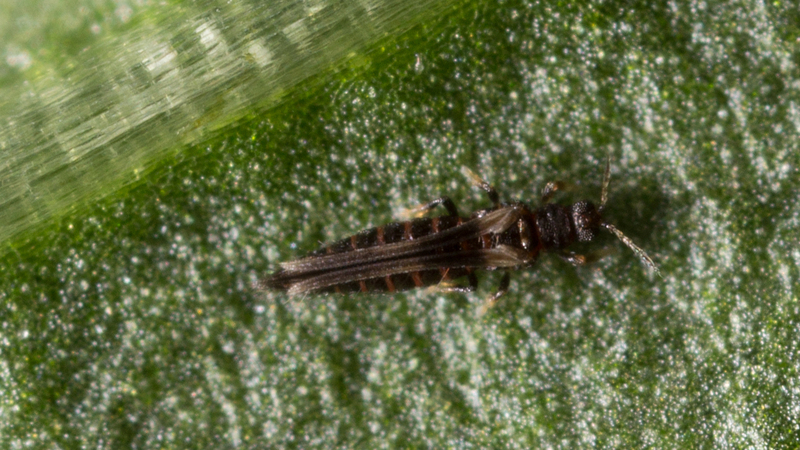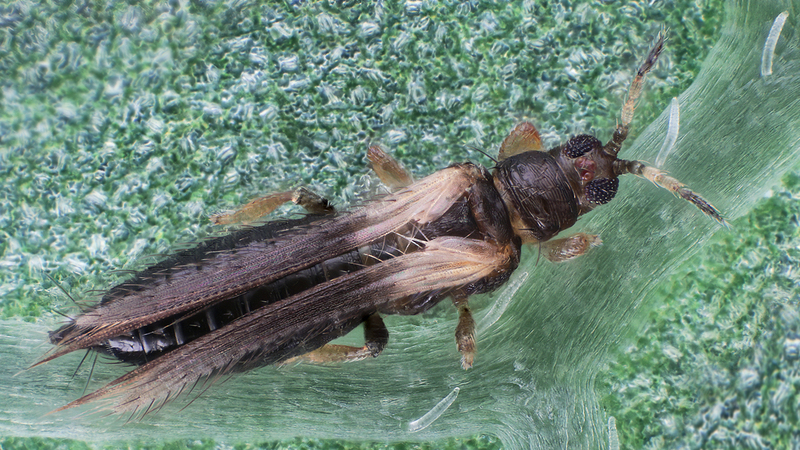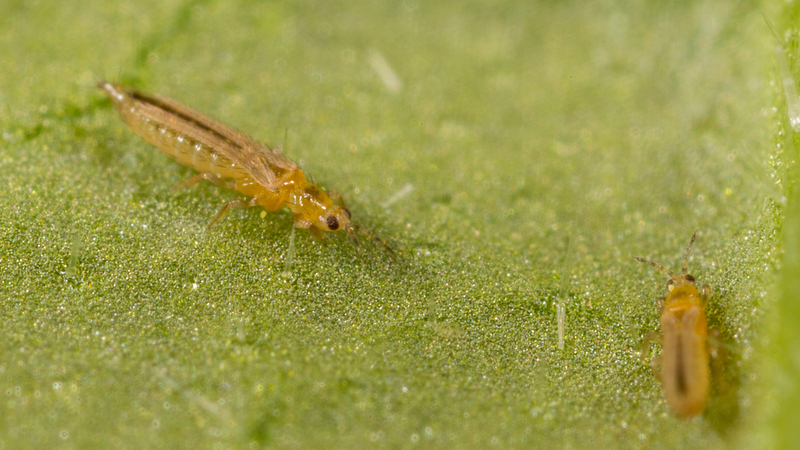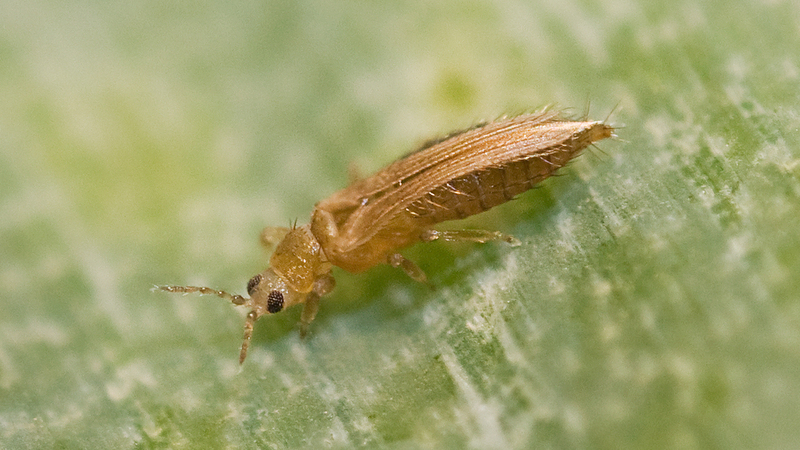Most growers know when there are thrips in their crop. After all, there are not very many tiny, slender insects that look like thrips. More difficult, however, is determining the exact identity of the intruder. Because specific knowledge and expertise is a must, only an expert can provide a definitive answer. Nevertheless, we can help you get started with a few rules of thumb.
- Echinothrips americanus is the easiest to identify: these thrips have black and orange stripes on the abdomen.

- Remember that Thrips setosus looks very much like americanus. Fortunately, these two thrips varieties behave very differently: setosus is very active, while americanus is very lazy. The latter is often found in groups low in the crop, and you will almost never find them on the sticky traps. In short, a busy, striped insect is probably setosus. If you find a slow, striped insect at the bottom of the crop, there is a good chance you have the dubious honour of a visit from americanus.

- Western flower and onion thrips look very similar. And relying on the colour alone doesn't provide a solution either, as this varies depending on the ambient temperature and the food source. In this respect, thrips are real chameleons! Females of the western flower thrips can be white, but they can also be yellow, orange, or dark brown. The male is paler, smaller, and has two orange spots on the abdomen. Onion thrips females are greyish yellow to brown. Males are lighter and have no wings.

- Onion thrips are often found along large leaf veins, while western flower thrips can often be found in the flower.

As stated, only an expert can provide a definitive answer. They take a critical look at the thrips and examine their colour, length, shape of the antenna, hairs on the head and thorax, pattern on the head and thorax, fringe and hair on the forewings, and pattern on the forewings.
Get in touch with us and let us help you identify the thrips problem you are dealing with, as choose the best solutions to control it effectively!